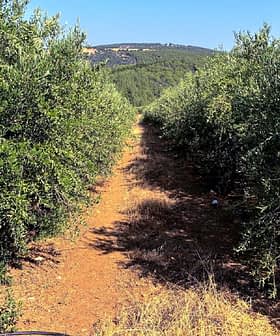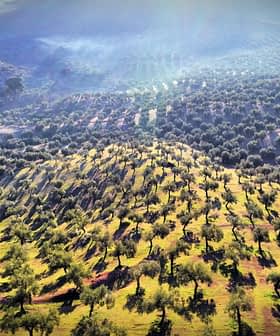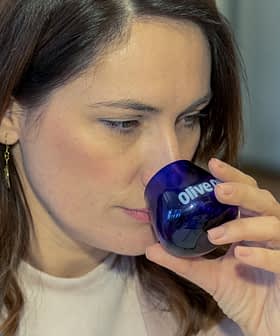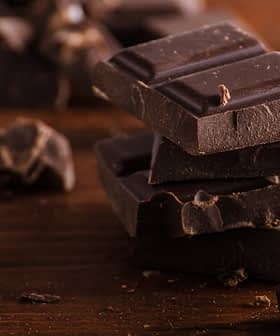By Daniel Williams
Olive Oil Times Contributor | Reporting from Barcelona
Study Sponsored by Local Olive Oil Producers Claims Olive Oil with ‘La Rioja’ Denomination of Origin Is Healthier Due to Higher Levels of Oleic Acid
According to a recent study by Spain’s Technological Center of the Meat Industry (CTIC) and the Association of Olive Oil Mills and Olive Cultivators of La Rioja (Asolrioja), extra virgin olive oil with the Spanish “La Rioja” denomination of origin is healthy due to higher levels of oleic acid. Oleic acid has been shown to slow the development of heart disease and promote the production of antioxidants in the human body.
The study analyzed oil from the 2006 – 2007, 2007 – 2008 and 2008 – 2009 campaigns in order to arrive at general conclusions from an analysis of organoleptic parameters and the chemical content of olive oil which gives researches the ability to determine the quality of an olive oil in relation to other types.
The findings were publicly presented by the manager of the Economic Development Agency for La Rioja (ADER), Javier Ureña, the general director of Quality, Investigation, and Rural Development, Opedro Manuel Sáez Rojo, the president of Asolrioja, Manolo Catalán, and the leader of the scientific project, Elena Romero.
Catalán explained that the study “shows an important differentiation within the over-satured olive oil market and the need to not simply tell the consumer that one’s olive oil is the best, but that it is now necessary to prove it.” Romero set La Rioja’s oil apart from the hundreds of worldwide competitors by claiming that the study confirmed that, “La Rioja olive oil is unique from a sensorial point of view; it is beautifully scented and has a greenish tinge.” [1]
These efforts to differentiate Spanish olive oil are part of a larger marketing project promoted and subsidized by Spanish local and national governments during a time where newly emerging olive oil producing nations threaten Spanish dominance of the world market.
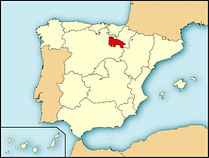 La Rioja is a province and autonomous community of northern Spain. Its capital is Logroño. Other cities and towns in the province include Calahorra, Arnedo, Alfaro, Haro, Santo Domingo de la Calzada, and Nájera.
La Rioja is a province and autonomous community of northern Spain. Its capital is Logroño. Other cities and towns in the province include Calahorra, Arnedo, Alfaro, Haro, Santo Domingo de la Calzada, and Nájera.
The report’s conclusions, though not its data, were made available on the CTIC website and are translated here:
The conclusions of the work, which is based on the campaigns 2006 – 2007, 2007 – 2008 and 2008 and 2009, are:
1 .- There is a clear grouping and consistency of results in terms of the values obtained in all parameters examined for all areas and seasons.
2 .- The behavior of the extra virgin olive oils from all areas of La Rioja differ very little from each other, so that all have a behavior based on data analyzed that is very similar.
3 .- DOP oils from La Rioja have similarities for 80% of the attributes tested with significantly different values of color index and peroxides.
4 .- Although there are differences in the color index between them, we say that our oils, regardless of the area they come from, belong to the chromatic scale from green-ocher, the most green in Zone of the Rioja Baja and the most ocher those of Rioja Media.
5 .- It is noted that there is a clear correlation between the parameters analyzed by instrumental and sensory techniques: 2‑nonenal and value of fruit. There is a clear uniformity of results for both campaigns to areas, which confirms the initial hypothesis on the organoleptic characteristics that were expected a priori from these olive oils: fruity aromas predominate and are slightly green.
6 .- The oils analyzed DOP campaign (06 – 07, 07 – 08 and 08 – 09) are slightly bitter-green characteristic due to the use of olives that have not finished completing their maturation, and a touch fruity but not too intense with very characteristic aromatic notes, the highest values correspond to bitter-green oils from Rioja Alta, and most fruits are those of Rioja Media.
7 .- The PDO olive oils from La Rioja have oleic acid levels very acceptable, and it has been shown that there are no significant differences in the samples analyzed (either by area or campaigns) being the average of all 70.04 ± 2.19 ppm oleic acid, values well above the theoretical. The high amount of oleic acid in these olive oils gives them added value, while representing a small percentage
of olive oils in this parameter is important and also makes them healthier.La Rioja oleic sector has an important presence in the great national and European market. They are producing and selling more and more olive oil, being a business to boom. Much of this area produces extra virgin olive oil under the brand quality “Protected Designation of Origin: Olive Oil of La Rioja.”
.
.
[1] Larioja.com“El aceite de la DOP Rioja es más saludable por su elevado nivel de ácido oleico” July 31, 2010



